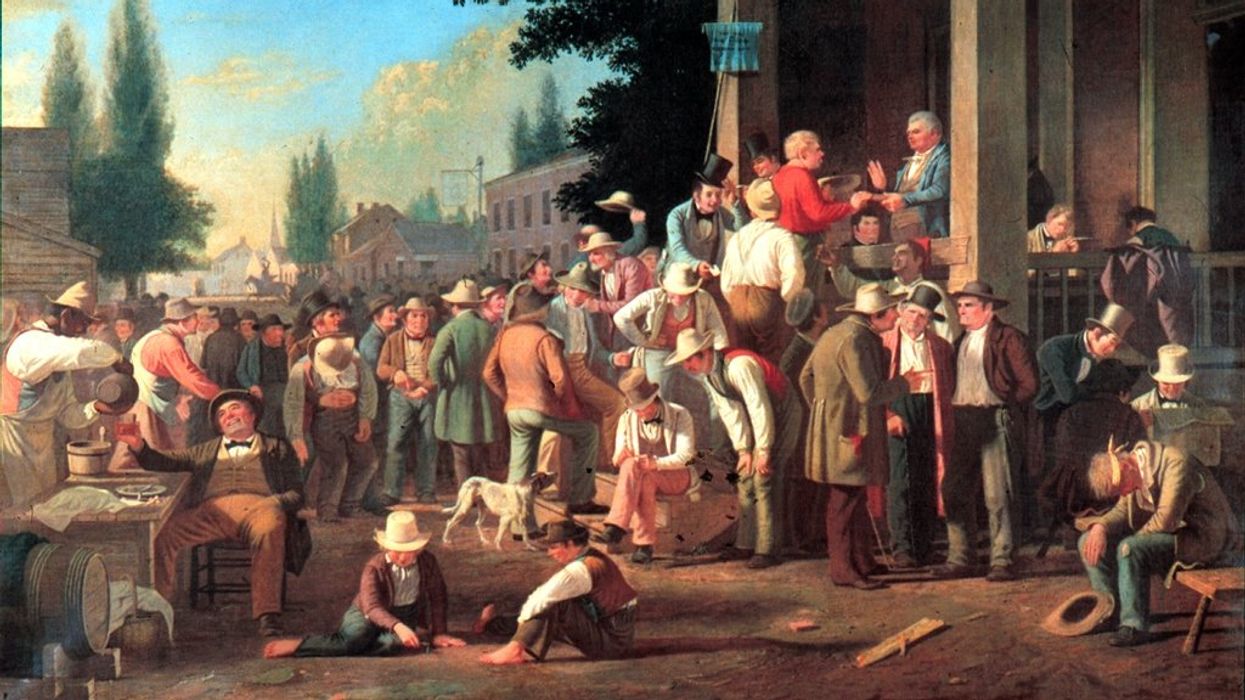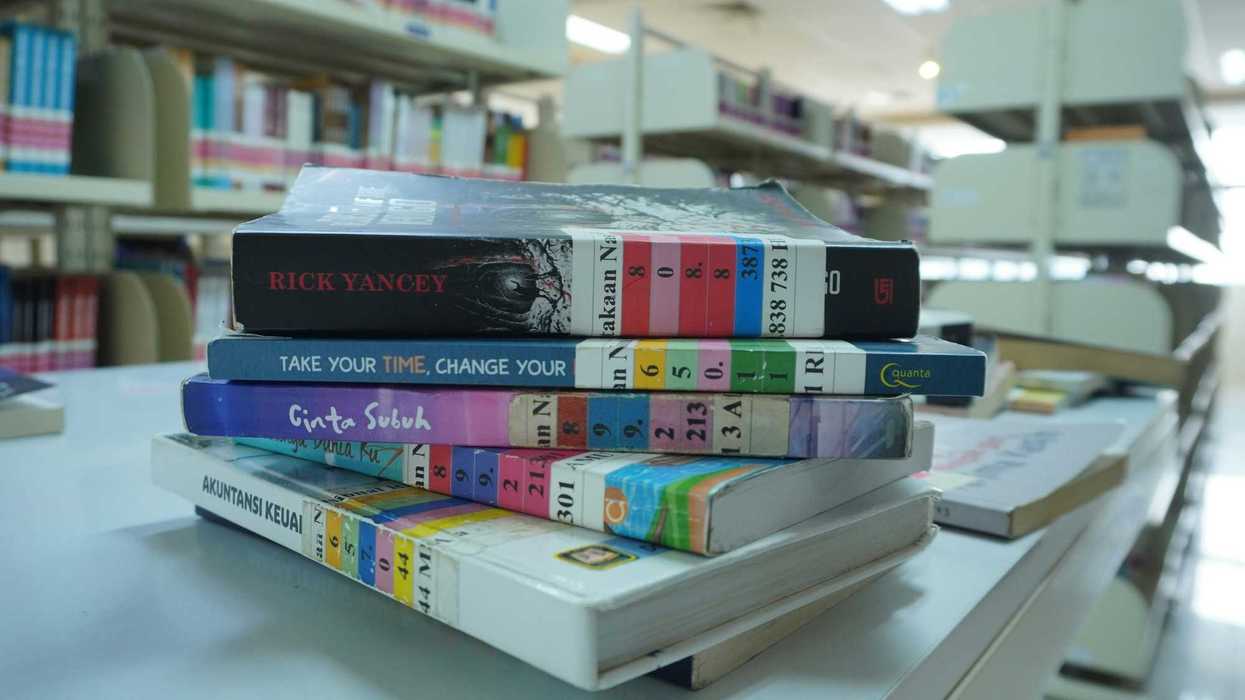Myers is executive director of the ProRep Coalition. Nickerson is executive director of Fair Vote Canada, a campaign for proportional representations (not affiliated with the U.S. reform organization FairVote.)
Among all advanced democracies, perhaps no two countries have a closer relationship — or more in common — than the United States and Canada. Our strong connection is partly due to geography: we share the longest border between any two countries and have a free trade agreement that’s made our economies reliant on one another. But our ties run much deeper than just that of friendly neighbors. As former British colonies, we’re siblings sharing a parent. And like actual siblings, whether we like it or not, we’ve inherited some of our parent’s flaws.
When comparing our democratic institutions, Canada and the United States have a range of differences. Canada’s government is a parliamentary democracy, the United States’ is a federal republic; Canada’s government is led by a prime minister, the U.S. elects a president through the Electoral College; Canadian citizens are protected by their Charter of Rights, U.S. citizens by their Bill of Rights. Yet, despite our differences, we do have one crucial similarity. We’ve inherited and historically overlooked the same democratic institution that, incidentally, informs the character and efficacy of all our other institutions: our electoral system.
When the United States drafted its Constitution in 1787, and Canada structured its government in 1867, both needed to select the rules and methods for conducting their elections. At the time, very few other democracies existed, so there were a limited number of election systems in place to comparatively analyze. So both countries, and most other former British colonies, adopted the elections they were most familiar with: the winner-take-all elections used in Britain’s House of Commons.
Winner-take-all electoral systems, often known as "first past the post" or "plurality voting," are those in which the candidate who receives the most votes in an election wins all the representation, excluding minority views. Among the many impacts electoral systems have on the political life of a country, perhaps most notable is their influence on the number of political parties representing voters. Winner-take-all systems tend to generate legislatures dominated by two major parties.
In the United States, winner-take-all elections are used to select the president, members of Congress and representatives in all 50 state legislatures.
In Canada, winner-take-all elections are used to elect representatives at every level of government: municipal, provincial and federal.
In the United States, winner-take-all elections have produced a fully polarized two-party system wherein representation for one party comes at the expense of the other. Such a dynamic has fueled political division, legislative gridlock and resulted in general governmental dysfunction. This isn’t lost on American voters: political violence is on the rise, Congress’ approval rating is at 16 percent, and 85 percent of Americans believe major political reform is needed.
In Canada, winner-take-all elections have resulted in majority governments elected with less than 40 percent of voters’ support, a near-monopoly on power for two major parties and widespread underrepresentation of voters who prefer smaller parties. A majority of Canadians see political parties as divisive forces, the electorate is becoming increasingly polarized, and threats of violence are on the rise.
While the symptoms of our political problems have manifested slightly differently, their sources are the same: our winner-take-all elections. As a result, in recent years both countries have experienced a period of democratic backsliding and have seen their rankings decline in global democracy indexes. Perhaps most notably, the United States has transitioned from being a “full” to a “flawed democracy.”
Our democratic struggles are compounded by the rising power of authoritarian forces like Donald Trump in the United States. From voters’ perspective, the short-term solution to combating encroaching authoritarianism in the U.S. and Canada is clear: Vote for the parties and candidates that respect democratic norms and the rule of law. The long-term solution, though, isn’t going to be found in the existing frameworks that have harbored the very division and polarization that threatens our nature.
Fortunately, there’s a path forward. While most former British colonies have resorted to winner-take-all systems as their default for elections, most advanced democracies have engaged in electoral innovation and experimentation over the last few decades. In turn, a growing share of countries have transitioned to an electoral system that produces a more representative and resilient model of democracy: proportional representation.
Proportional representation refers to a type of electoral system that distributes legislative seats to political parties in proportion to the number of votes they receive in elections. So if a party earns 30 percent of the votes, it gets 30 percent of the seats. This kind of electoral system reliably produces robust, multiparty legislatures and is used by the likes of Germany, South Africa, New Zealand and Uruguay. Canada and the United States should take note. In fact, in Canada, many advocates already have.
Efforts to raise awareness and campaign for the adoption of proportional representation have been underway in Canada for decades now. A broad network of electoral reformers is working to advance PR across provincial and national elections. Though none have been successful yet, multiple campaigns for PR have come remarkably close to being adopted. Support for PR is also quickly growing in the United Kingdom, especially after this month’s election generated outcomes that some have called “the most disproportional in British electoral history.”
In the U.S., however, efforts to advance PR have historically been eclipsed by more moderate reforms, like ranked-choice voting and open primaries. But as America’s democratic crisis worsens, the calls for major electoral reform are growing and a new generation of PR advocates is emerging. Supported by the academic community, these new efforts aim to advance PR at the state and federal levels. Interestingly, unlike in Canada and the U.K., where the only path to adopting PR is through Parliament, American advocates have multiple promising routes to reform. Twenty-six states have an initiative process, referendum process or both, which could allow voters to adopt PR without the support of the governor or legislature.
Adopting PR in just one U.S. state will be far from easy. It’s never been done before and electoral system design is a concept that remains far removed from most Americans’ political consciousness. So as this next generation of PR advocates grows in the U.S., it’s important they remember they’re not alone in the campaign for a better democracy. Americans have plenty to learn from their siblings to the north, and Canadians have plenty to gain from any U.S. successes. After all, the adoption of proportional representation in one state wouldn’t only be transformative for the U.S., but for Canada and the U.K. as well.
All it takes is one successful campaign to show the world that major electoral reform is possible; advanced democracies don’t need to settle with the antiquated, unrepresentative systems we’ve inherited. We, too, can grow and improve.



















